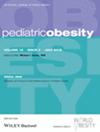Nutrition transition's latest stage: Are ultra-processed food increases in low- and middle-income countries dooming our preschoolers' diets and future health?
Abstract
Introduction
Rapid shifts in dietary patterns, marked by increased consumption of ultra-processed foods (UPFs), are increasingly impacting the health and wellbeing of infants and toddlers in low- and middle-income countries.
Methods
Utilizing data from the Demographic and Health Surveys, other national surveys, NCD-RisC data and Euromonitor sales data, we examine changes in stunting and overweight/obesity prevalence alongside the latest data on UPF consumption trends.
Results
The prevalence of overweight/obesity among children and mothers is increasing rapidly while stunting rates decline slowly. Simultaneously, there is a significant increase in consumption of UPFs, especially among preschool-aged children. Increasingly, poorer households are experiencing faster rates of increase in overweight and obesity prevalence compared to wealthier households. Results highlight the early socialization of infants and toddlers to unhealthy discretionary foods including UPFs, potentially setting the stage for long-term dietary preferences that favour food with high sugar or excess sodium.
Conclusion
There is an urgent need to address the rapid increases in UPF consumption among infants and toddlers. Options include expanding the WHO Code on marketing to protect 0–3-year-olds; creating front-of-package warning labels focusing on products for children ages 0–3 years to remove all added sugar and limit sodium in foods and beverages they consume.


 求助内容:
求助内容: 应助结果提醒方式:
应助结果提醒方式:


